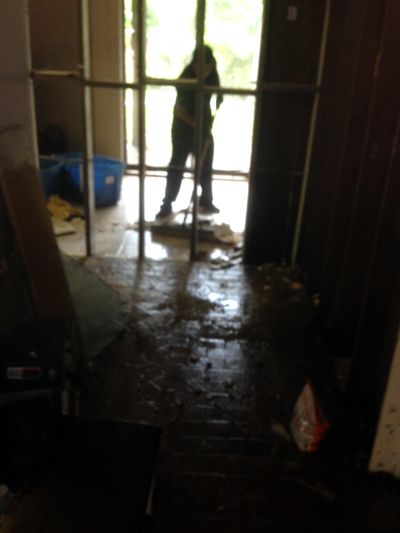Have a Short Term and Long Term Plan

Short-Term Assistance (Immediate Needs):
FEMA Individual Assistance:
Registration: The most important thing is to register with FEMA as soon as possible. You can do this online at DisasterAssistance.gov, through the FEMA mobile app, or by calling 1-800-621-FEMA (3362). Make sure you have your social security number, address of the damaged property, contact information, insurance information, and bank account information (for direct deposit of funds).
Home Inspections: FEMA inspectors are conducting home inspections to assess the damage. Be sure to schedule your inspection as soon as you are contacted. Have photos and videos of the damage ready to show the inspector.
Financial Assistance: FEMA is providing financial assistance for:
Temporary Housing: Funds to help pay for a place to stay while your home is unlivable. This could include hotels, apartments, or other rental properties.
Essential Home Repairs: Money to repair damage to make your home safe, sanitary, and functional. This typically covers things like roofs, windows, and essential utilities.
Other Needs Assistance: Funds for essential items like clothing, food, medical expenses, and childcare.
Transitional Sheltering Assistance (TSA): FEMA may activate TSA, which allows eligible survivors to stay in participating hotels at FEMA's expense for a limited time. Check with FEMA to see if TSA is available in your area.
Small Business Administration (SBA) Disaster Loans:
Home Disaster Loans: SBA offers low-interest disaster loans to homeowners to repair or replace damaged property. Even if you're not a business owner, you can apply for a home disaster loan.
Business Disaster Loans: SBA also provides loans to businesses of all sizes and private nonprofit organizations to repair or replace damaged property, inventory, and equipment.
State and Local Resources:
Shelters: Local and state authorities are operating shelters for those who have been displaced. Contact your local emergency management office or the Red Cross to find the nearest shelter.
Food and Water Distribution: Food banks and volunteer organizations are distributing food, water, and other essential supplies. Check with local news outlets or emergency management agencies for distribution locations and times.
Clean-Up Assistance: Volunteer organizations are often available to help with debris removal and home clean-up. Contact the Red Cross, Salvation Army, or other local volunteer groups.
Texas Department of Emergency Management (TDEM): TDEM is coordinating the state's response to the disaster. Visit their website for updates and resources.
American Red Cross:
Shelter and Support: The Red Cross is providing shelter, food, and emotional support to those affected by the floods.
Health Services: They are also offering health services, such as first aid and mental health counseling.
Insurance:
File Claims Immediately: Contact your insurance company (homeowners, flood, auto) as soon as possible to file a claim. Document the damage with photos and videos.
National Flood Insurance Program (NFIP): If you have flood insurance through NFIP, contact them to file a claim.
Long-Term Assistance (Rebuilding and Recovery):
FEMA Continued Assistance:
Appeals: If you disagree with FEMA's decision on your application, you have the right to appeal. Follow the instructions in the determination letter you receive from FEMA.
Continued Temporary Housing Assistance: In some cases, FEMA may extend temporary housing assistance if you are still unable to return to your home.
Disaster Case Management: FEMA may provide case management services to help you navigate the recovery process and connect with resources.
SBA Disaster Loans (Long-Term Recovery):
Long-Term Funding: SBA disaster loans can provide long-term funding for rebuilding and recovery.
Economic Injury Disaster Loans (EIDL): SBA offers EIDLs to small businesses and private nonprofit organizations to help meet working capital needs caused by the disaster.
Housing Assistance:
Texas General Land Office (GLO): The GLO administers housing recovery programs funded by the U.S. Department of Housing and Urban Development (HUD). These programs may provide assistance with rebuilding, repairing, or elevating homes.
HUD Programs: HUD offers various housing programs that may be available to disaster victims, such as Section 8 vouchers and public housing.
Mental Health Services:
Disaster Distress Helpline: SAMHSA's Disaster Distress Helpline provides 24/7 crisis counseling and support to people experiencing emotional distress related to the disaster. Call or text 1-800-985-5990.
Local Mental Health Providers: Many local mental health providers offer counseling and support services to disaster victims.
Legal Assistance:
Legal Aid: Legal aid organizations provide free legal assistance to low-income individuals affected by the disaster.
Long-Term Recovery Groups (LTRGs): VOADs coordinate the efforts of volunteer organizations to provide long-term recovery assistance to disaster victims. LTRGs can help with rebuilding, case management, and other needs.
Recovery Takes A Long Time, Do Not Rush and Do Not Get Taken

IMPORTANT NEXT STEPS!
Beware of Fraud: Be cautious of contractors and individuals offering assistance. Verify their credentials and get multiple estimates before hiring anyone. Report any suspected fraud to the authorities.
Document Everything: Keep records of all expenses related to the disaster, including receipts, invoices, and photos.
Stay Informed: Stay up-to-date on the latest information from FEMA, state, and local authorities. Monitor news outlets and social media for updates. Contact your county or city emergency management office.
Be Patient and Communicate: The recovery process can be long and challenging. Be patient with yourself and others, and don't hesitate to ask for and take help. Communicate with others to help them and get the help you need in return.
This website uses cookies.
We use cookies to analyze website traffic and optimize your website experience. By accepting our use of cookies, your data will be aggregated with all other user data.